8 Types of Ticks in New Jersey (With Pictures)
-
Melissa Gunter
- Last updated:

Whether you’re a pet owner or someone who loves spending time in the great outdoors, knowing the dangers around you is crucial to your survival. This is especially true when it comes to ticks. Ticks are known for carrying dangerous diseases and making both humans and pets extremely sick. This is why being able to identify the ticks you see in your area is so important.
For people in New Jersey, there are several species of ticks that are common, and in some cases an issue, in your area. Let’s take a look at 8 types of ticks found in New Jersey so you can keep your eyes open and steer clear of these potentially deadly pests.
The 8 Types of Ticks in New Jersey
1. The Brown Dog Tick
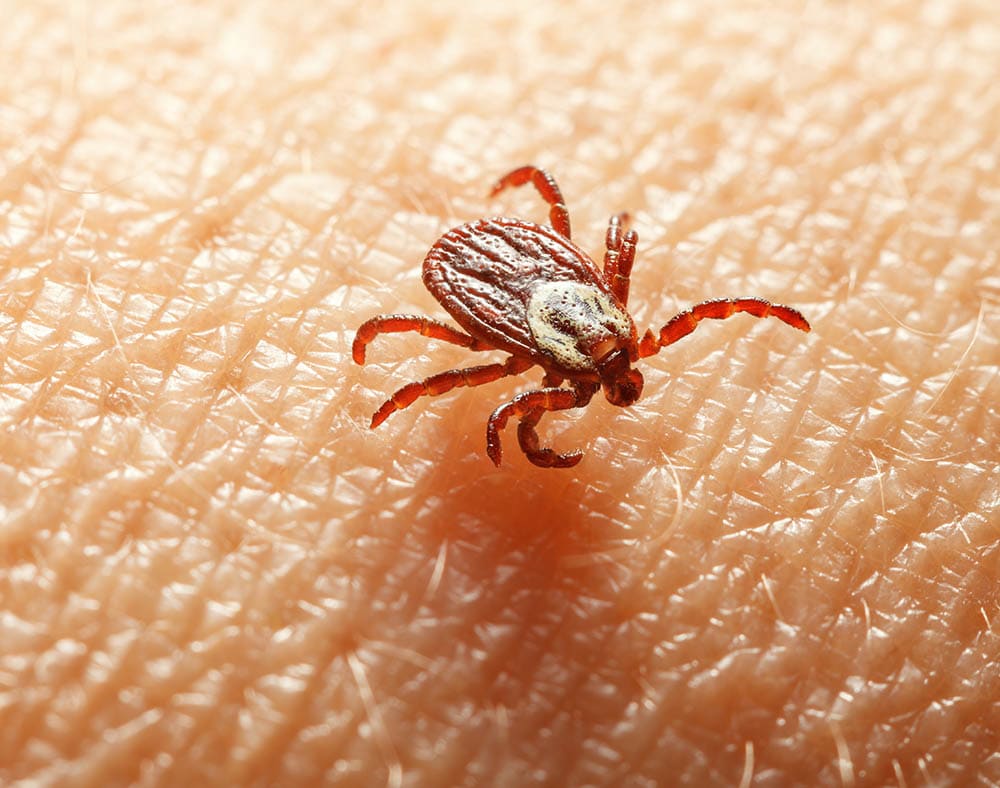
The Brown Dog Tick is the most widespread tick species in New Jersey. This tick gets its name from dogs being considered their favorite host. Found in lots of indoor areas, this species of tick can live its entire lifecycle indoors. As a disease carrier, this tick can transmit several illnesses to dogs and can also carry Rocky Mountain spotted fever which can be dangerous for humans. Luckily, this species doesn’t bite humans often.
- Both sexes of this species have elongated bodies and are reddish-brown.
- Females take larger amounts of blood when feeding than the males which makes them the larger of the species.
2. Eastern Blacklegged Tick
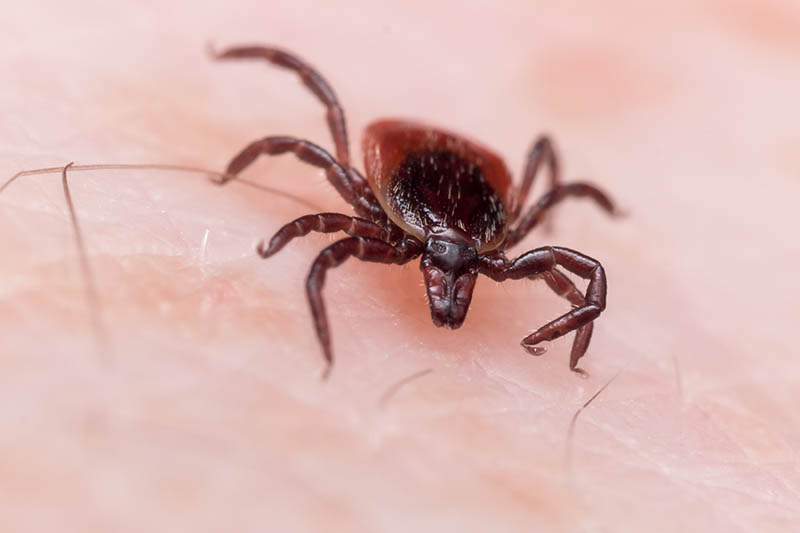
The Eastern Blacklegged Tick is New Jersey’s top carrier of Lyme disease. This tick is known to feed off mammals, including humans, at every stage of its life. They enjoy living in low vegetation areas where they attach to whatever they come into contact with. These ticks are slow feeders and, if infected, can transmit Lyme disease within 24 to 48 hours. Unfortunately, it is the nymph stage of this tick that is most dangerous to humans. At this stage, this tick is around the size of a poppy seed and can be attached long enough to pass diseases before they are discovered.
- The adult males of this species are dark brown or black and feature a grayish or tan band around their abdomen.
- Adult females are known for their black legs and have a reddish-orange shield.
- This tick is also known as the deer tick.
3. Lone Star Tick
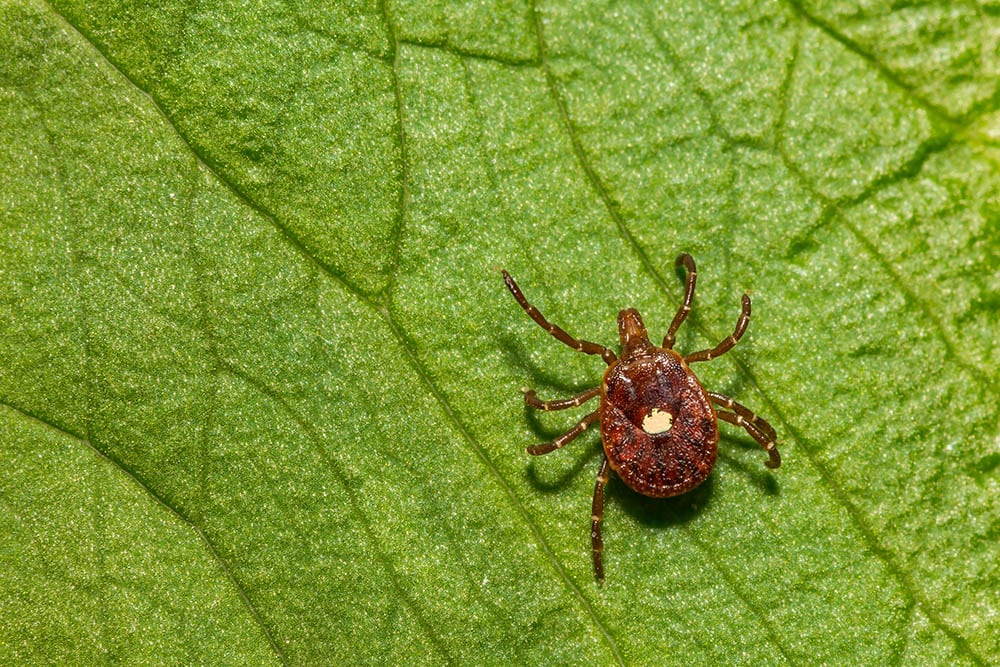
While most commonly found on white-tailed deer, the Lone Star tick is known to feed on humans throughout all stages of its life. This tick carries a wide range of diseases including Rocky Mountain spotted fever but, oddly enough, doesn’t carry Lyme disease. What is unusual about this tick is that it also transmits Alpha-gal, a severe meat allergy. This allergy can be deadly.
- Colors vary and can be reddish brown to tan.
- This tick has a rounded body.
- Adult females have a noticeable white spot on their backs.
- Adult males are identified by the white markings around their abdomen and on their legs.
4. Rabbit Tick
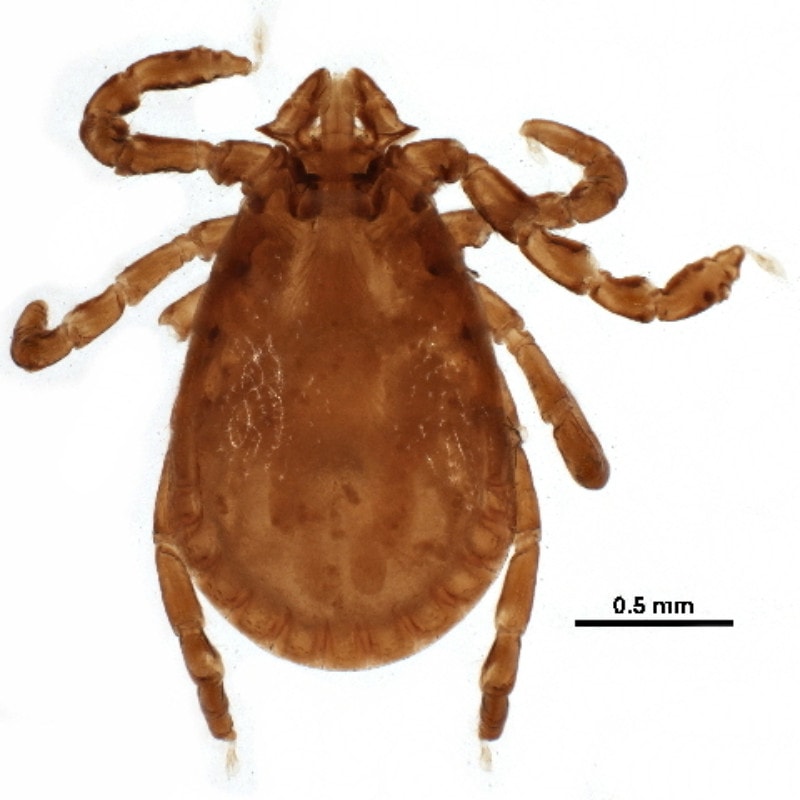
As the name would suggest, the rabbit tick prefers to choose rabbits or rodents as their host. While they are known to carry diseases, when it comes to humans, this isn’t of much concern as it is rare that this tick species will bite a human. This tick is prevalent in the spring and summer but they are rare to find in the winter.
- Adults of this species are reddish-tan to tan.
- Female Rabbit Ticks are larger than the males and appear darker in color.
5. Asian Longhorned Tick
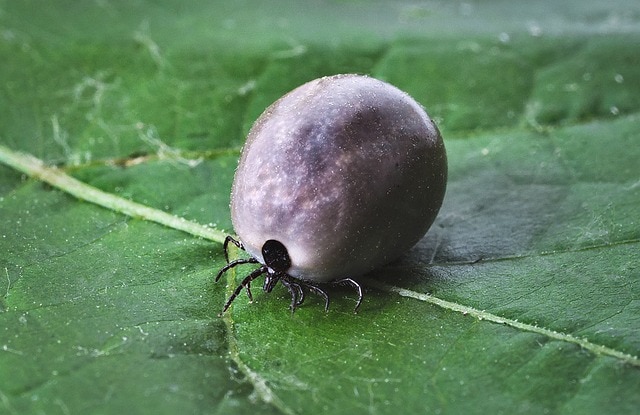
This tick is a native of Asia but was found in the United States in 2017 on a sheep farm. While this tick is a parasite that will suck the blood of different mammals and birds, including humans, it prefers farm animals. This invasive tick species prefers cows, pigs, goats, and chickens. It can lower the production of wool in sheep and milk in cows. It can also transmit theileriosis to cattle. This can be significantly dangerous to calves as it causes blood loss and even death. You’ll also find that this tick species can transmit several human diseases and should be considered dangerous.
- Males are reddish brown and yellow. They also have a yellowish edge on their bodies.
- Females have reddish-brown bodies with darker brown markings.
6. Winter Tick
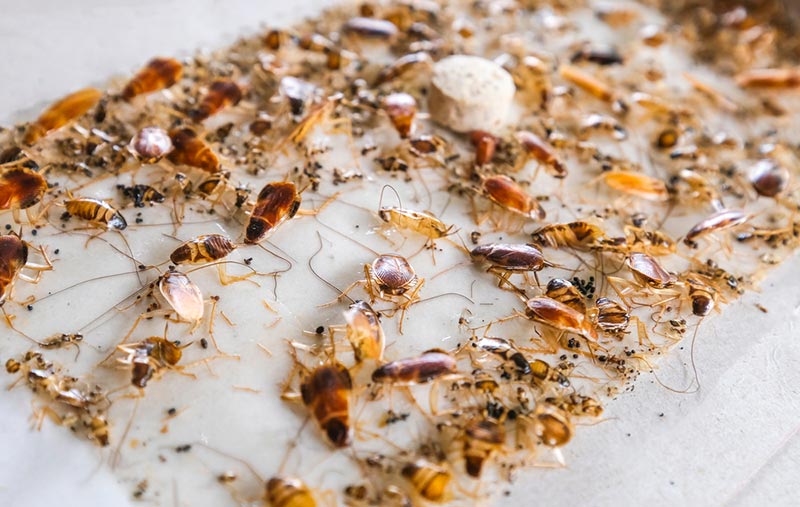
Another tick species that lives up to its name, the winter tick is most prevalent in the colder months of the year. This tick is especially troublesome to hooved animals and is mostly found in the animals’ territories around New Jersey. Don’t think these ticks won’t make a home on other mammals though. While they aren’t known for carrying any diseases or biting humans, these ticks can be troublesome for their hosts. Hair loss, anemia, and skin irritation are common. You will even find that moose, who can’t rid themselves of these ticks during grooming, are among the animals most affected as thousands of these ticks can infect one moose.
- Adult females feature a creamy white shield behind their heads and are reddish-brown.
- The adult males of this species have a crosshatch pattern on their backs and are dark brown.
- This tick is also known as the Moose tick as Moose are one of their primary targets.
7. American Dog Tick
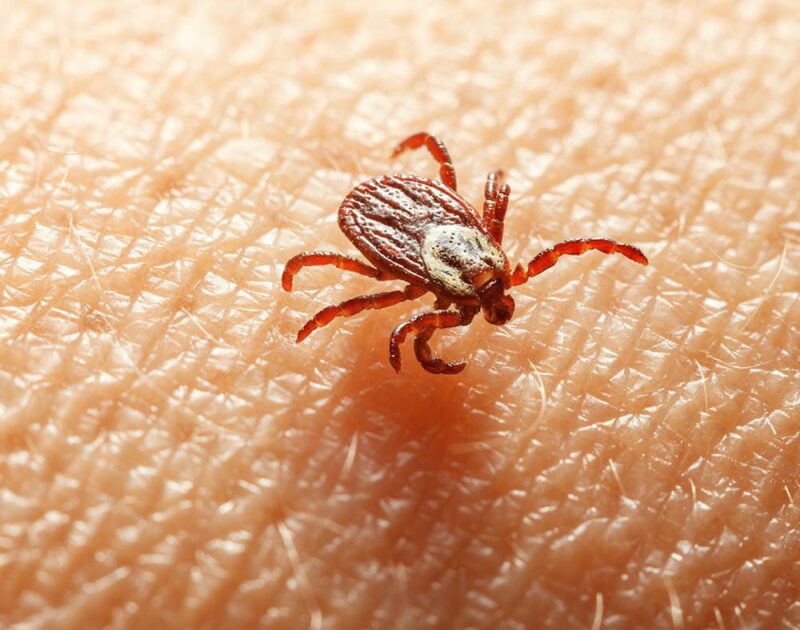
While the American Dog Tick is often found in urban areas where people and dogs dwell, that doesn’t mean they won’t attach to any mammal that passes by them. These ticks can carry Rocky Mountain spotted fever and have been known to cause paralysis in dogs and small children. Dogs are this tick’s preferred host and can be deadly if they aren’t removed as they can cause respiratory failure.
- These ticks are a dark reddish-brown with an oval body that is flat and features brown and creamy white markings.
- The females have shields that are cream-colored.
- The males have speckles all over their bodies.
8. Groundhog Tick
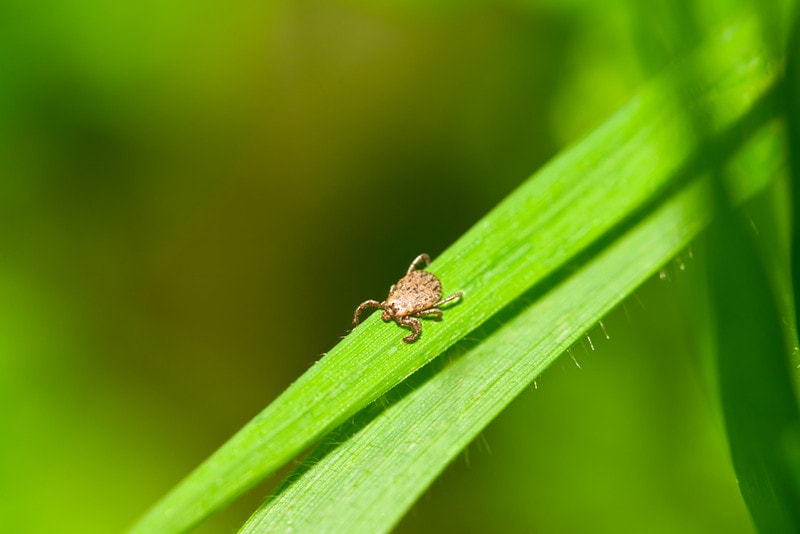
The Groundhog Tick is a summer species that enjoys small mammals such as groundhogs, raccoons, and foxes as their hosts. Luckily, it is rare that they bite humans. These ticks prefer nesting in the dens of their hosts and can lie in wait for feeding for up to a year. These ticks aren’t known for transmitting Lyme disease but they can transmit the deadly Powassan virus.
- The males of this species are reddish-brown on their backs.
- Females are a light tan color and have a dark brown shield near their heads.
Conclusion
This look at the common ticks found in New Jersey can help you better identify ticks you may come in contact with so you can better protect yourself, your family, and your pets. Always remember, if you, a family member, or one of your pets has been bitten by a tick and starts exhibiting signs of illness, reach out for medical assistance as soon as possible.
- Related Read: 4 Types of Mosquitoes in New Jersey (With Pictures)
Featured Image Credit: Jerzy Górecki, Pixabay
Contents

